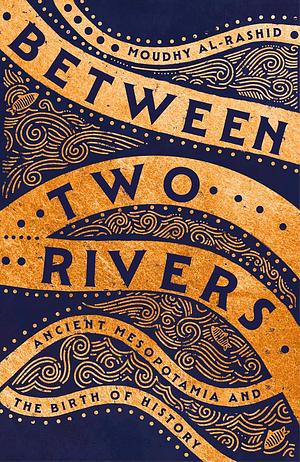
Between Two Rivers
by Moudhy Al-Rashid
Genres: History, Non-fictionPages: 336
Rating:

Synopsis:In ancient times, the vast area that stretches across what is now modern-day Iraq and Syria saw the rise and fall of epic civilizations who built the foundations of our world today. It was in this region, which we call Mesopotamia, that history was written down for the very first time.
With startling modernity, the people of Mesopotamia left behind hundreds of thousands of fragments of their everyday lives. Immortalised in clay and stone are intimate details from 4000 years ago. We find accounts of an enslaved person negotiating their freedom, a dog's paw prints as it accidentally stepped into fresh clay, a parent desperately trying to soothe a baby with a lullaby, the imprint of a child's teeth as it sank them into their clay homework, and countless receipts for beer.
In Between Two Rivers, historian Dr Moudhy Al-Rashid examines what these people chose to preserve in their own words about their lives, creating the first historical records and allowing us to brush hands with them thousands of years later.
Bringing us closer than ever before to the lives of ancient people, Between Two Rivers tells not just the history of Mesopotamia, but the story of how history was made.
Moudhy Al-Rashid’s Between Two Rivers is a conversational, fairly personal introduction to some Mesopotamian history through things that she is interested in herself, which made it a nice companion for a quiet evening, while leaving a bit of an itch for more info in some cases. The chapters lead on nicely from each other, building up a picture of ancient life based on the finds in the palace of Ennigaldi-Nanna, a priestess and daughter of a Babylonian king.
In the process, while introducing the finds and contextualising them as best as possible, Al-Rashid digs into some of the assumptions that archaeologists make (does a label for an item make a museum? does the presence of learning materials make a school, or are there other explanations like reuse of waste?). Perhaps the thing that startled me the most was realising that we can actually follow some specific ancient people through scribal records by name, getting a fair outline of their lives.
What’s most obviously lacking, though, is any kind of photography or even sketches to show us what she’s describing. She does write pretty good descriptions that give me a fairly reasonable idea of what she’s discussing, though I have no “mind’s eye” and thus I’m not really able to “picture” them in the way most people can.
So, yeah, pretty conversational, sometimes a little rambling/repetitive, overall: I enjoyed her style and her choices of topics, and found it an overall very pleasant read, but it did make me want to return to Selena Wisnom’s The Library of Ancient Wisdom and spend more time with that in hopes of more detail.
Rating: 4/5 (“really liked it”)
